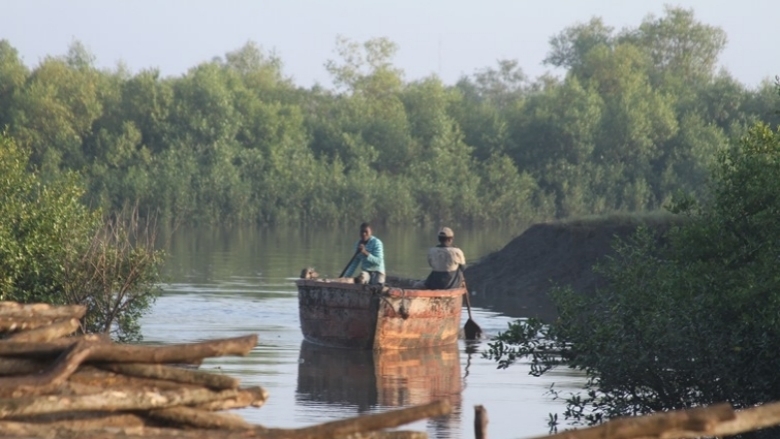“Smart” approaches aren’t just for cell phones. It’s time to take some of the qualities of smart technology – capable, cross-cutting and transformative – and apply them to the way we manage one of our most fundamental natural resources: forests.
What does it mean to be “forest smart”? In essence, it has to do with taking a comprehensive look at landscapes to understand how forests are being affected by activities in other sectors, and how to enhance the benefits that we derive from forests.
On one hand, global deforestation and forest degradation is being driven by a range of different factors, including the expansion of agricultural lands, the development of roads and mines, and the demand for wood-based fuels. On the other hand, while such activities are crucial to countries’ economic development and the wellbeing of local communities, they may also undermine the valuable services that forests provide, including carbon sequestration, air and water filtration, soil fertility, as well as a source of income and jobs.
At the World Bank, being forest smart entails finding the complementarities – and not just the competing factors – between these different sectors, to deliver benefits for the climate as well as for development. This approach is captured in the World Bank Group’s Forest Action Plan for Fiscal Years 2016-2010 and represents a critical element in meeting the World Bank’s poverty reduction goals, since forests provide critical support to the poor. Worldwide, 1 in 11 people are lifted out of extreme poverty thanks to forest resources. In addition to the 300-350 million people who live within or close to forests and depend on them almost entirely for their subsistence, hundreds of millions more rely on forests for food, construction materials, and energy.
Key to implementing the forest smart approach is working with a variety of partners to identify opportunities of mutual benefit, and to devise innovative solutions that can be implemented at scale. Importantly, the World Bank is able to draw on its expertise across a wide range of sectors, not just in forestry but also in the extractive industries, infrastructure, disaster risk management, energy and agriculture, among others.
One example of how the World Bank is carrying out the forest-smart approach is through a $47-million project in Mozambique, where currently around 140,000 hectares of forest are being lost every year. The project is investing in the livelihoods of thousands of small and medium landholders, improving the sustainability of activities that can impact forests - including the production of timber, charcoal and agricultural crops – while simultaneously reducing deforestation and greenhouse gas emissions. The forestry sector already accounts for nearly three percent of Mozambique’s GDP (2011 estimate) and directly employs 22,000 people, but there is significant potential for increasing these benefits.
Another example is the World Bank’s work in Moldova, where the majority of poor communities depend on agriculture for their livelihoods, but the competitiveness of agro-food exports remains relatively low. Part of the Moldova Agriculture Competitiveness Project is to increase the use of sustainable land management practices like forestry shelter belts, which can limit soil erosion and sequester carbon, while contributing to greater returns for farmers.
We are also getting smarter about harnessing the positive impacts of forests for reducing the risks from natural disasters. Mangroves, for instance, can not only act as a buffer against storms, flooding and coastal erosion, but also provide valuable habitat for wildlife - which translates into positive outcomes for fisheries, tourism, and local jobs. In Jamaica – one of the world’s most at-risk countries when it comes to natural hazards – a $30-million project aims to help the Government strengthen the country’s resilience to such threats, including by integrating nature-based infrastructure solutions. With additional support from the Program on Forests and the Global Facility for Disaster Risk and Recovery, this project will benefit 300,000 Jamaicans through better preparedness in the face of climate change.
No matter the driver, changes in forest cover can have very real and wide-reaching impacts on communities and their wellbeing, as well as on the global climate. The development challenges of an increasingly complex and connected world demand ever more comprehensive answers – including for forests. International Day of Forests, celebrated on March 21st, is a timely reminder that being forest smart is vital to achieving sustainable development objectives.
Are you forest smart? Take the quiz to find out!

